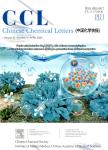Selective coordination and localized polarization in graphene quantum dots: Detection of fluoride anions using ultra-low-field NMR relaxometry
Selective coordination and localized polarization in graphene quantum dots: Detection of fluoride anions using ultra-low-field NMR relaxometry作者机构:State Key Laboratory of Functional Materials of InformaticsShanghai Institute of Microsystem and Information TechnologyChinese Academy of Sciences(CAS)Shanghai 200050China CAS Center for Excellence in Superconducting Electronics(CENSE)Chinese Academy of SciencesShanghai 200050China Center of Materials Science and Optoelectronics EngineeringUniversity of Chinese Academy of SciencesBeijing 100049China
出 版 物:《Chinese Chemical Letters》 (中国化学快报(英文版))
年 卷 期:2021年第32卷第12期
页 面:3921-3926页
核心收录:
学科分类:081704[工学-应用化学] 07[理学] 070304[理学-物理化学(含∶化学物理)] 08[工学] 0817[工学-化学工程与技术] 070302[理学-分析化学] 0703[理学-化学]
基 金:financially supported by the National Natural Science Foundation of China (Nos. 11874378, 11804353, and 11774368) the Science and Technology Commission of Shanghai Municipality (Nos. 19511107100, 19511107400)
主 题:Graphene quantum dots Coordination Polarization Relaxometry Magnetic sensor Nuclear magnetic resonance Fluoride anion
摘 要:The development of ultra-sensitive methods for detecting anions is limited by their low charge to radius ratios, microenvironment sensitivity, and p H sensitivity. In this paper, a magnetic sensor is devised that exploits the controllable and selective coordination that occurs between a magnetic graphene quantum dot(GQD) and fluoride anion(F–). The sensor is used to measure the change in relaxation time of aqueous solutions of magnetic GQDs in the presence of F–using ultra-low-field(118 μT) nuclear magnetic resonance relaxometry. The method was optimized to produce a limit of detection of 10 nmol/L and then applied to quantitatively detect F–in domestic water samples. More importantly, the key factors responsible for the change in relaxation time of the magnetic GQDs in the presence of F–are revealed to be the selective coordination that occurs between the GQDs and F–as well as the localized polarization of the water protons. This striking finding is not only significant for the development of other magnetic probes for sensing anions but also has important ramifications for the design of contrast agents with enhanced relaxivity for use in magnetic resonance imaging.



